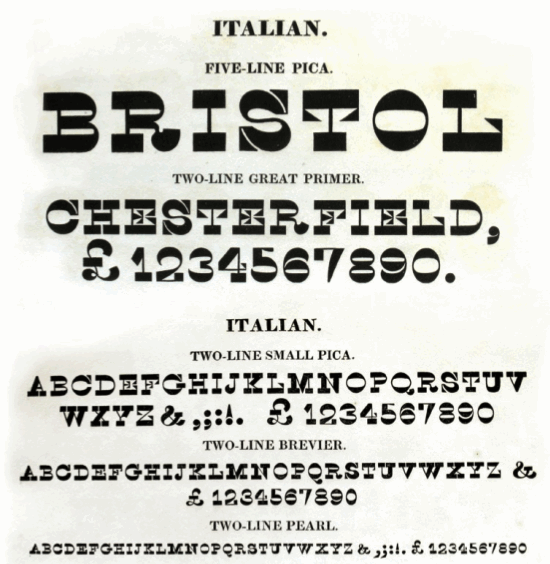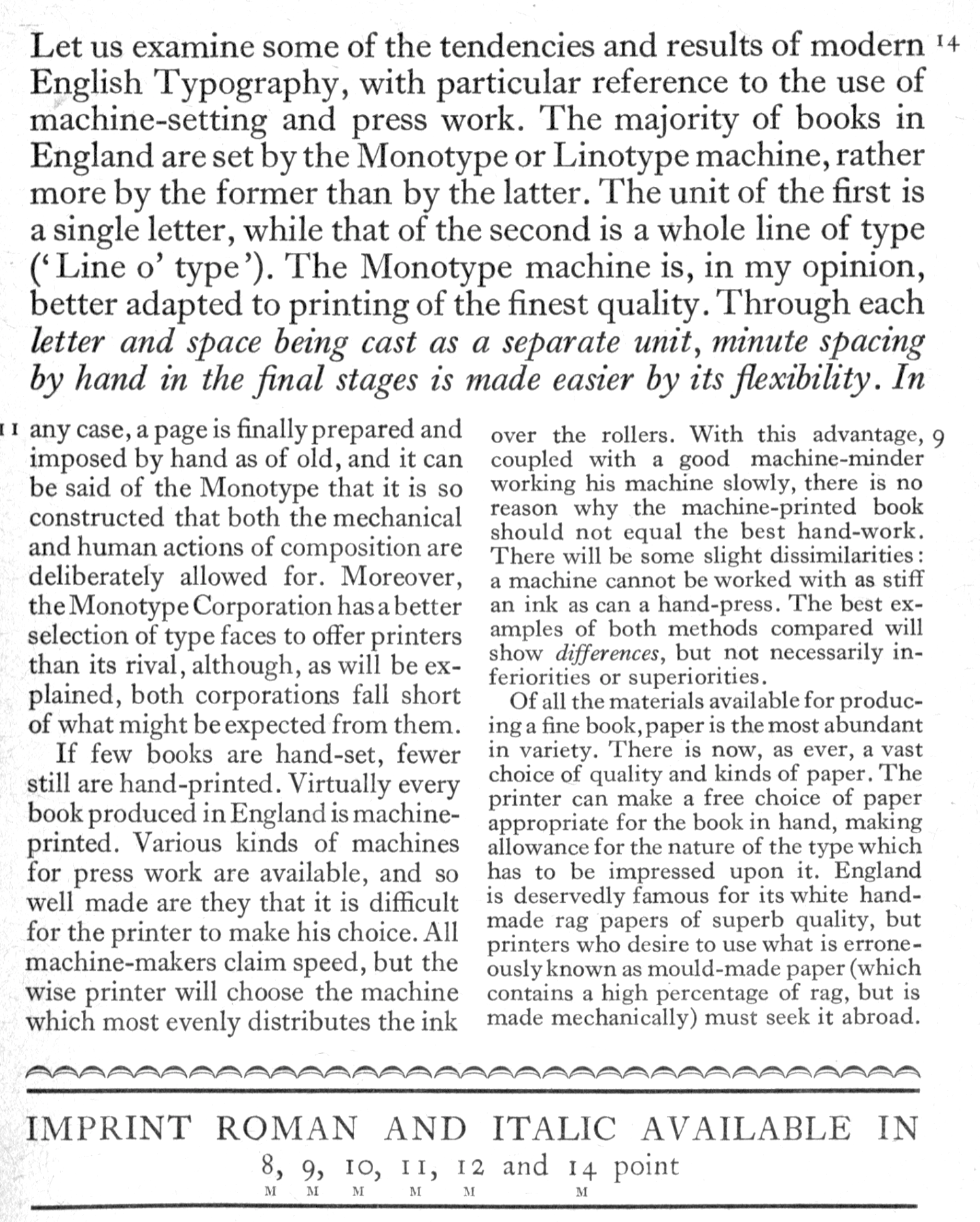TYPE DESIGN INFORMATION PAGE last updated on Fri Nov 14 13:11:21 EST 2025
FONT RECOGNITION VIA FONT MOOSE
|
|
|
|
Caslon wiki
The Caslon wiki states: William Caslon's types of the early eighteenth-century were extremely popular then, and strongly revived in the late nineteenth century, producing many versions. Since the Caslon Foundry was in business for a long time, there are many Caslon typefaces. Caslon's designs were markedly different at different sizes (for instance, some of his uppercase Cs had serifs at top and bottom, some only at the top); variation in design is not therefore necessarily a sign of "inauthenticity". Caslon's type was popular in every sense. It was popular in the eighteenth century (until it was eased out by modern typefaces in the early 19th). When the fashion of "old face" revived in the 19th, many in England and America looked to Caslon's type as the model. And, at a time when lay people probably knew less about font-names than they do now, "Caslon" was a name quite a few people did know. George Bernard Shaw, for example, absolutely insisted that his work be set in Caslon. This vast popularity of Caslon's types led to a practically endless range of copies, among them Caslon 540 from American Type Founders in 1902, and Caslon 3, a slightly bolder typeface also from ATF in 1905, which was later modified for use on Intertype and Linotype technologies. Both designs have the warm, solid, straightforward style that has made Caslon popular for over 200 years; these Caslons, however, have shorter descenders, and higher contrast, features that enable them to hold up better with the faster presses and the new varieties of paper introduced at the turn-of-the-century. As with Garamond, there are not only typefaces which use the Caslon name, but typefaces which are Caslon-inspired. Of some importance historically is Imprint, which was designed by (English) Monotype in 1913 for use in the (short-lived) Imprint journal. Because the journal was interested in the "improvement" of typography, it chose to release its typeface for general use. It took the "cleaning up" of Caslon's type for modern use a stage further, deliberately increasing x-height, reducing the notoriously loose fit of some of Caslon's type, and removing some of its archaic character. Wikipedia. |
EXTERNAL LINKS |
| | |

file name: Caslons Italian1821

file name: Caslon540 Italic

file name: A Working Handbook Of Types In Use At The Curwen Press 1931 Imprint Roman And Italic
| | |
|
Luc Devroye ⦿ School of Computer Science ⦿ McGill University Montreal, Canada H3A 2K6 ⦿ lucdevroye@gmail.com ⦿ https://luc.devroye.org ⦿ https://luc.devroye.org/fonts.html |

